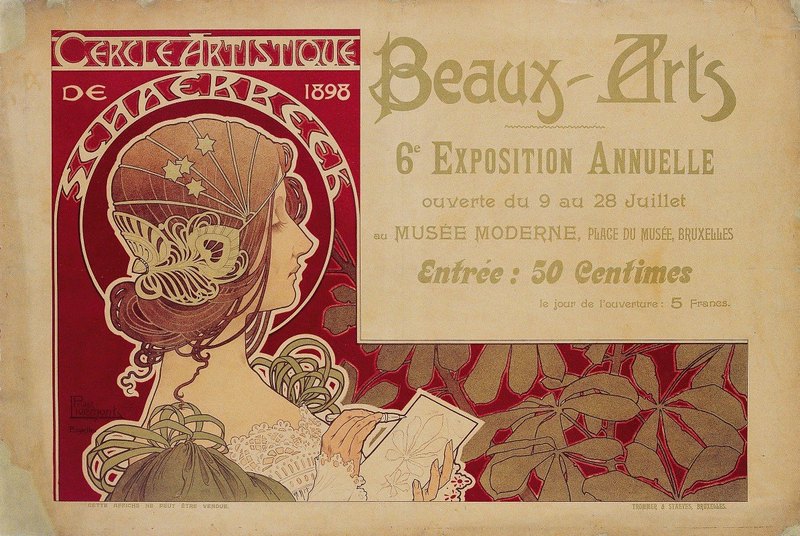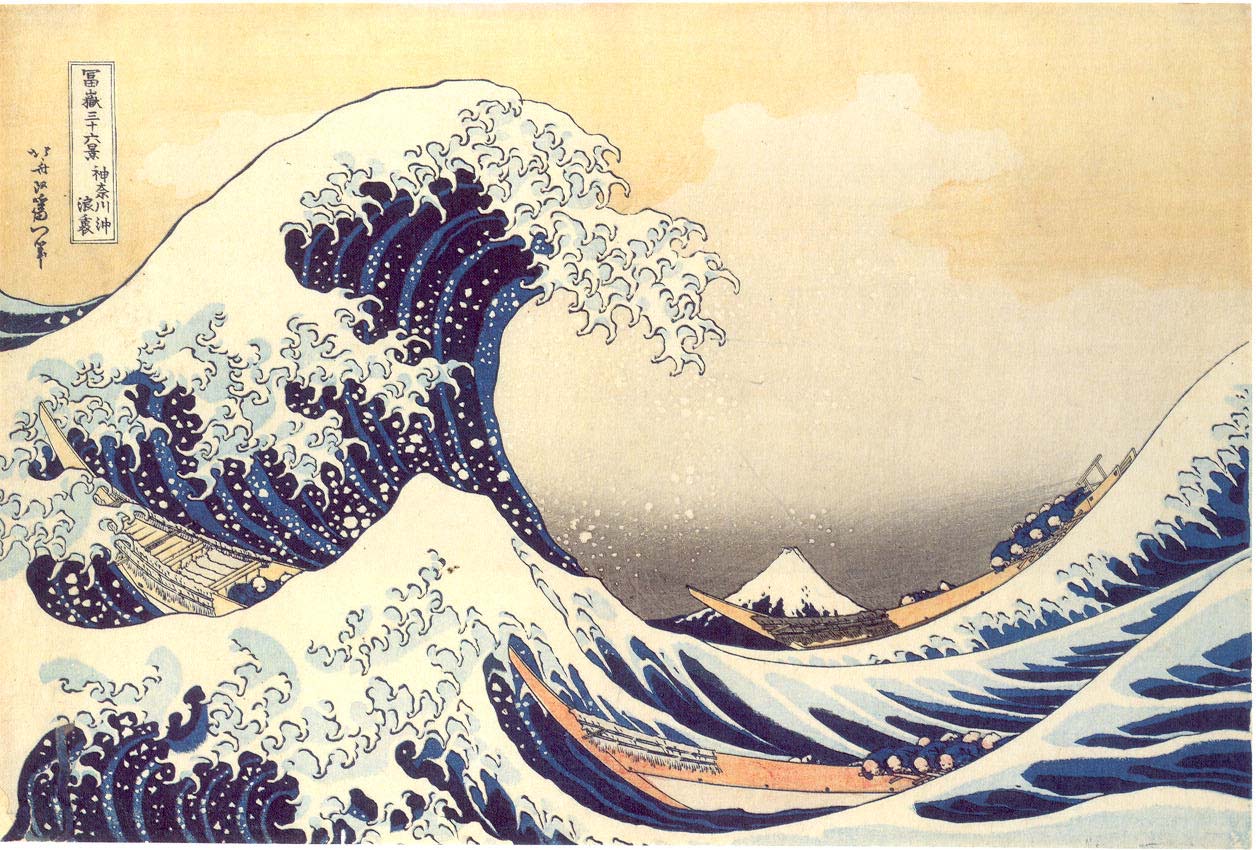Tags
Alphonse Mucha, Architecture, Art Nouveau, Art Nouveau Posters, Dutch Museum of Lithography, Jugendstil, Lithography, Nederlands Steendrukmuseum, Poster Art, Privat-Livemont, stained glass
After the huge success* of their solo-exhibition about Alphonse Mucha’s lithographic work, the Dutch Museum of Lithography is currently showing another solo-exhibition: Privat-Livemont, Master of Belgian Art Nouveau. Oddly enough, the whole world knows about Alphonse Mucha, but Privat-Livemont has remained a rather unknown artist. So, who was Henri Privat-Livemont?
* During the corona-pandemic the Dutch Museum of Lithography was closed for four months and yet it managed to attract over 10.000 visitors to the Mucha exhibition.
The uncontested master of the Belgian posterists
In 1898, a contemporary critic wrote about Privat-Livemont in the prestigious English magazine The Poster: “Privat-Livemont, now the uncontested master of the Belgian posterists… his works display not only excellent drawings and luxuriant elegance in design, but fine composition and a harmony of exquisite colours; he has gained many imitators in Belgium. It has been insinuated that Privat-Livemont was an imitator of Mucha. Such an absurd legend we distinctly deny. Livemont is an artist ever seeking for original ideas, a lover of his art, and so sure of his own powers that he can rely on himself for inspiration.“

Henri Privat-Livemont (1861–1936)
Privat-Livemont was born in Schaerbeek, a suburb north-east of Brussels. In 1873 (only 12 years old) he entered the École des Arts Decoratifs, the school for the decorative arts. After finishing his education in 1883, he moved to Paris on a state scholarship. Livemont stayed in Paris for 6 years, studying decorative painting. But he also experimented with portraits and landscapes, regularly displaying his work at the Salons. When the state ended his scholarship in 1889, Privat-Livemont returned to Schaerbeek. He had just married Madeleine ‘Madelon’ Brown. Their son Franz was born in Belgium in 1891. Madelon regularly modelled for her husband and we can assume that she is featured in many of his works. Yet after 1904, when their marriage had turned sour, Privat-Livemont started using other models. Henri and Madelon got divorced in 1908.

Poster Artist by Chance
While Brussels had become the boiling epicenter of Art Nouveau, Schaarbeek could be regarded as its ‘Monmartre’. National and international artists (painters, sculptors and designers) as well as writers mingled at art galleries, salons, cabarets, restaurants, cafés and art circles. And after 1880 these literary and artistic cirles became an Avant Garde stronghold. Due to economic growth and the need to advertise, academic artists who aspired to a totally new art, saw the potential of poster art.


In those days, Privat-Livemont was mainly commissioned by the wealthy bourgeoisie to decorate their houses. But he also painted portraits and (flower) still lifes. In 1890 however, he tried something new: he entered a competition issued by the Cercle Artistique de Schaerbeek to design a poster for their first annual Exposition. And his submission was the winning design! Privat-Livemont had become a poster artist by chance.


Though that first poster did not yet show any Art Nouveau characteristics, Privat-Livemont already gave us a glimpse of what would become his ‘monumental woman’. She was elegant, mysterious and graceful. She would often have naked arms and manicured hands, a delicate face and charming mouth, heavy eyelids and accentuated eyelashes. This monumental, sensual yet unattainable woman would become his ‘trademark’.
Privat-Livemont versus Mucha
If you are not yet familiar with the women Privat-Livemont drew, you might confuse them with Mucha’s women. But they really are rather different. The curator of the Steendrukmuseum, Lisette Almering-Strik, has worked out the characteristic differences for us. So here it is. You won’t ever confuse one of Privat-Livemont’s ladies with one of Mucha’s ladies again!
| PRIVAT-LIVEMONT | MUCHA |
| Naturalistic mature women | Distant dreamy, static young women |
| In the middle of an act | Staring in the distance |
| Face 3/4 or en profil | Full frontal |
| Bright vibrant colours | Pastel colours |
| Double contour lines | One heavy dark contour line |
| Modest halo | Beautifully detailed halo |
| Belgian women | Byzantine / Slavic / Hebrew… women |


Decorative Arts versus Fine Arts
Unlike Mucha, who clearly valued Fine Arts over Decorative Arts and dedicated the last 20 years of his live to painting his Slav Epic, Privat-Livemont remained a decorative artist at heart. Mucha always aspired to becoming a fine arts painter. Just because he couldn’t make ends meet, he worked for printing companies illustrating magazines and drawing advertising posters etc. But Privat-Livemont studied decorative arts. And he always worked as a decorative artist. Over the years I have come accross many of his works. And thanks to this exhibition about his lithographic poster art, I was reminded of all those other amazing works of art he created.
In 1891 Privat-Livemont became a teacher at the Josephat School for Drawing and Crafts, teaching ‘Ornament, Figure and Ornamental Composition’. Fellow teachers at this school were the well known artists Adolphe Crespin (1859-1944) teaching ‘Elementary Graphic Skills and Decoration’, Paul Hankar (1859-1901) teaching ‘Architecture’ and Paul Saintenoy (1862-1952) teaching ‘Architecture- and Art History’. In 1903 architect Henri Jacobs designed a new building for the school, which would hereafter be called the École Industrielle. Together, the teachers decorated the school as if to inspire their students and instill them with a sense of beauty. Isn’t that a wonderful thought?!?



During the BANAD (the Brussels Art Nouveau & Art Deco) festival in 2019 I had the pleasure of getting a tour of this school. I remember I was in total awe as the entire school is decorated. Privat-Livemont designed the sgraffiti both inside and out and it is a feast for the eye! (Note to self: publish a blog about this school.)


Besides sgraffiti, Privat-Livemont created beautiful tile panels too. A spectacular example that immediately comes to mind is the collection of tile panels he designed for the Grande Maison de Blanc in Brussel, a department store selling textiles and related products. Two tile panels represent the allegories of Commerce and Industry; the other panels reveal charming ladies surrounded by flowers while admiring embroidery, stockings, lingerie, lace, corsets and so on. These remarkable ceramic tile panels were executed in 1897 by the Boch pottery at La Louvière and can still be admired walking along the Kiekenmarkt 32 today.

Another one of Privat-Livemont’s spectacular designs, one that many people may have seen not knowing who created it, is this stained-glass window at Hôtel Saintenoy. The window was executed by famous French glass artist Raphaël Évaldre (1862-1938). In the same year he designed this window (1897), Privat-Livemont created a lithograph showing a similar mermaid in the waves. His mermaids in the waves appear to be a tribute to Katsushika Hokusai’s woodblock print, the Wave of Kanagawa. Japanese woodblock prints had been introduced in Brussels at the Les XX and La Libre Esthétique expositions, initiated by Paris art dealer Siegfried Bing. Japanese woodblock prints became a craze in Brussels and also Privat-Livemont is known to have collected them.


First Solo-Exhibition in 100 Years in The Netherlands
In 1904, Privat-Livemont had his first solo-exhibit in The Netherlands. No fewer than 212 of his works were presented at the Haarlem Arts & Crafts Museum. In 1906, he had another solo-exhibition, this time in Rotterdam. Privat-Livemont had gained acclaim in The Netherlands with advertising posters for Cacao. His first Dutch lithograph was for Van Houten Cacao in 1897. The poster was intended for the Belgian market and commisioning a well-known Belgian artist was a smart move from Van Houten. Not too long after that, Privat-Livemont received commissions from other Dutch cacao manufacturers. He also designed delightful posters for Helm Cacao (1899) and Cacao A. Driessen (1900).



Besides for Cacao, Privat-Livemont made heaps more advertising posters for the Dutch market. For J.C. Boldoot parfum (1899), Bols genever (1900) and Rajah coffee (1899) for instance… And I just love those warm reds and greens he used. Don’t you?



But the Dutch Lithography Museum has so much more to offer. Despite the popularity of his work, Privat-Livemont’s collection became fragmented not long after his death. And the lithography museum has gone to great lengths to bring together work from a large number of private collections. Work that involves lithography, oil paintings and drawings. Including advertising posters, fine art, postcards, political statements, caricatures, magazines, catalogues, biscuit tins and so on. If you ever wanted to learn more about Privat-Livemont, to see how versatile he was, this is your chance!


So, if you are (like me) a bit bored by all the Mucha exhibitions that rapidly multiply around the world, you will enjoy feasting your eyes on this refreshing retrospective exhibition of the lithographic oeuvre of Privat-Livemont at the Dutch Museum of Lithography. The show is on until the end of July 2022.


The museum prints a wonderful catalogue for each of their exhibitions and there is a comprehensive catalogue about this exhibition (in Dutch) available as well at their webshop, for only €7,50 (plus shipping).
The catalogue is written by curator Lisette Almering. It is a full colour hard-cover with 88 pages, including all the works in the exhibition.
Check out the catalogues in their webshop here.
Continue Reading:
Anno1900 – De Zeemeermin van Henri Privat-Livemont
Anno1900 – Mucha versus Privat-Livemont
De vrouw als priesteres op puntgave affiches in Steendrukmuseum
Ideale uitstap voor kunstliefhebbers: Steendrukmuseum toont werk van Belgische meester
L’École industrielle de Schaerbeek: un enseignement alliant Science et Art
Privat-Livemont, meester van de Belgische Art Nouveau izi.Travel Audio guide
The Poster – Digitized Online Database of the Magazine
Virtual Tour Alphonse Mucha Exhibition Dutch Lithography Museum

Very interesting and elaborated post, I did not know him. Thank you¡
LikeLiked by 1 person
Thank you for your kind words Julio! He was a wonderful artist and his work is lovely! I hope many more people will get to know him now. Beste regards, Olga
LikeLike